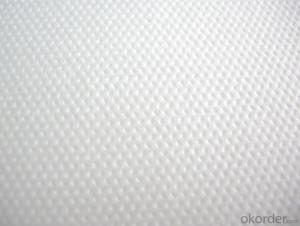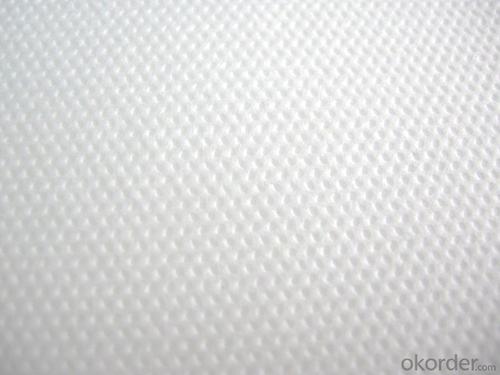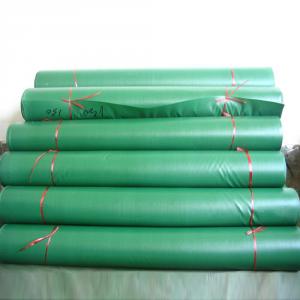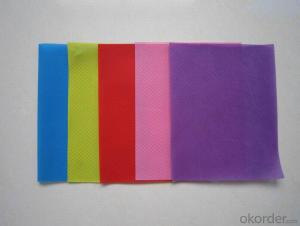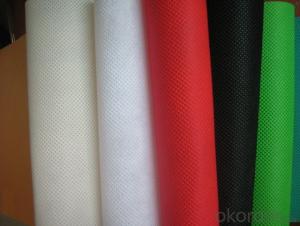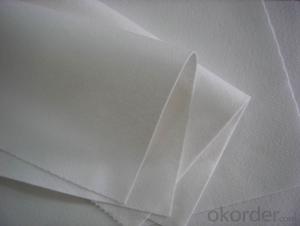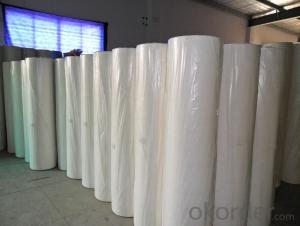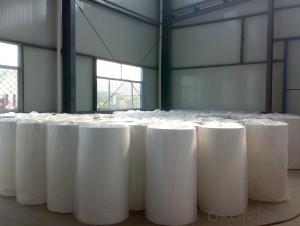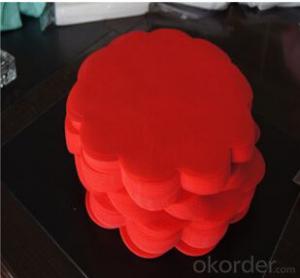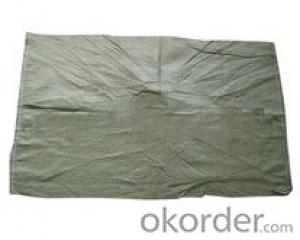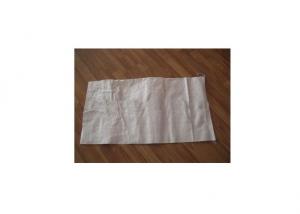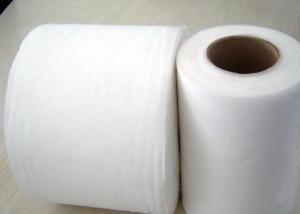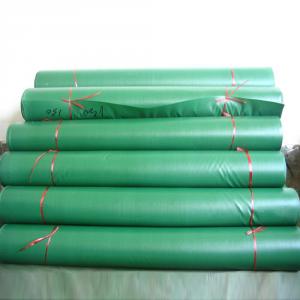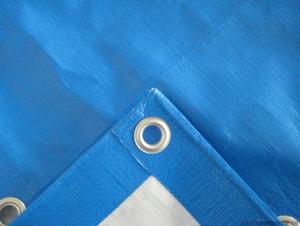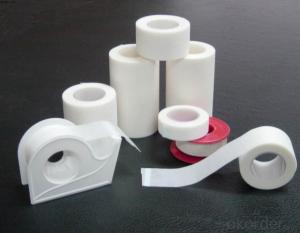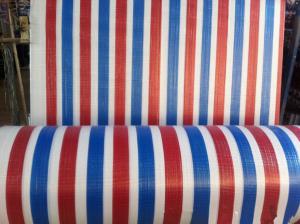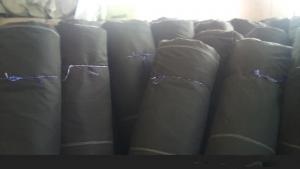High Quality Colored Pp Non Woven Fabric For Making Bag(free color card can be sent)
- Loading Port:
- Shanghai
- Payment Terms:
- TT OR LC
- Min Order Qty:
- 1000 roll
- Supply Capability:
- 10000 roll/month
OKorder Service Pledge
OKorder Financial Service
You Might Also Like
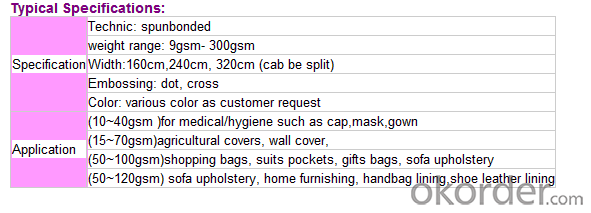
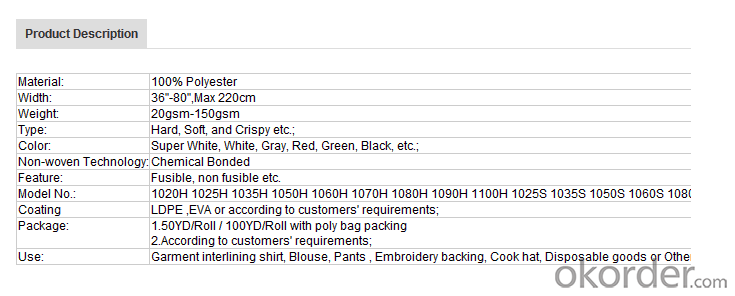 PP non woven weed control mat is made of environmentally friendly raw materials, pp spunbond nonwoven fabric. It used to prevent the growth of weed, without the use of potentially dangerous chemical sprays or labor intensive hoeing. Once installed, weed mat will continue providing protection for years without maintenance.
PP non woven weed control mat is made of environmentally friendly raw materials, pp spunbond nonwoven fabric. It used to prevent the growth of weed, without the use of potentially dangerous chemical sprays or labor intensive hoeing. Once installed, weed mat will continue providing protection for years without maintenance.
They are permeable fabrics, which allow air, water and nutrients to pass through, and designed to block out the sun to reduce photosynthesis and stop weed growth.

The use of landscaping fabrics has become extremely popular in recent years for many reasons:
1. Leisure time is maximised - the need for weeding and on-going maintenance is minimised
2. Environmentally friendly - no need for chemical based weed killers
3. Promotes healthier plants - it allows the soil to breath and water to permeate
We offer different types of weed control fabrics to suit all applications and budgets.
1. Available in a range of sizes & materials to suit various applications from small to large landscaping projects, in both commercial and domestic situations.
2. All our landscape fabrics are UV stabilised
3. Ideal for use under paths, patios, decking, paving, bark mulch, gravel etc.
FEATURES:
1. Weed suppressant and drainage control landscaping fabric
2. Spun bonded non-woven fabric – will not fray when cut
3. Easy to use
4. Environmentally friendly
5. Allows water, air and nutrients through, suppressing weeds without the use of chemicals
6. Good alternative to Plantex® where cost is a factor
7. UV Stabilised
8. Reduces the level of watering required due to the slower rate of water evaporation
FUNCTION:
1. Cover crops in the ground surface,prevent weeds and against the insect
2. Controlling soil humidity and the temperature
3. Does not affect the growth of the crops
4. Protects plants from harmfully solar radiation
5. Air permeability, water permeability help crops growth.
6. Mothproof, eco-friendly, breathable, anti-bacteria, tear-resistant, fusible
APPLICATIONS:
1. Weed block for landscaped garden beds
2. Permeable liners for planters (stops soil erosion)
3. Weed control under wooden decking
4. Geotextile for separating aggregate / soils under walkway blocks or bricks
5. Assists in preventing paving from settling unevenly
6. Landscape fabric prevents soil erosion
Health - Hygiene & Medical
Surgical Gowns
Gloves
Face Masks
Foot covers
Diapers
Caps
Bedsheets
Curtains
Pillow Covers
Slippers
Packaging
Sleeping Bags
Tarpaulins
Tents
Artificial Leather
Bags for Rice/Sugar etc.
Luggage
Vacuum Cleaner Bags
Tea and Coffee Bags
Buff Pads
Shopping Bags
Agriculture
Crop Covers
Turf Protections
Nursery Over wintering
Weed Control Fabrics
Root Bags
Containers
Capillary Matting
Other types of covers
Furniture Upholstery
Roofing and Tile Underlayment
Acoustical Ceilings
Insulation
House wrap
Pipe wrap
Sofa and Mattress Lining
Shoes & Garments
Coveralls
Pillow cases
Airline Headrests
Interlinings
Clothing and Glove insulation
Bra and Shoulder Padding
ADVANTAGES:
1. Lower labour costs as no weeding maintenance for years;
2. Water seeps through and can conserve soil moisture for improved growing conditions;
3. Air escapes – humidity rises through the mat for a more controlled growing environment;
4. Increase crop yields close to 25% due to improved growing conditions and absence of water stress and competition of nutrients absorption from weeds;
5. Minimises bacteria and fungus problems especially Algae;
6. Strong, woven construction or pressed fibre sheet resists tears and punctures;
7. Resistant to mildew, rot, water, sunlight and most of the agricultural chemicals
8. Fertilizer is applied on the mat, thus helping the owner or estate manager to monitor the progress of manuring;
9. Prevents soil erosion or leaching of soil nutrients or fertilizers applied;
10. Environmental friendly.
- Q: The weight of the textile fabric
- Fabric cost = raw material cost + weaving costs + dyeing after finishing processing fees + test volume packaging costs + tax + loss of all links
- Q: What kind of fiber can be used as textile fiber
- Can be used as textile fibers with natural fibers and chemical fibers. 1, natural fiber source is divided into plant fiber and animal fiber, plant fiber, plant fiber is natural cellulose fiber
- Q: How to make fibrous textiles for waste plastic bottles?
- Plastic bottle is a treasure, you can also make quilts, sofas, mattresses and other home textiles fillers, can also be used to make carpets, imitation and down products
- Q: Antistatic fabrics of textile electrostatic materials
- Resulting in the transfer of charge on the surface of the object, resulting in static electricity. With the same charge of the fibers are mutually exclusive, with different charges of fibers and mechanical parts between the attraction, resulting in sliver hair, yarn hairiness increased, bad package molding, fiber bonding parts, yarn breakage increased, As well as the formation of scattered cloth on the cloth and so on
- Q: What are the problems with the transformation and upgrading of the processing trade of textile enterprises?
- Especially in the second half of the international financial crisis is a great impact on the textile and garment export market. Textile enterprises are faced with unprecedented difficulties and challenges. February the State Council adopted the "textile industry restructuring and revitalization plan", the purpose is to actively respond to the current international financial crisis
- Q: What is the purpose of using detergent in the textile industry?
- Detergent is mainly used for chemical fiber and blended textile dyeing treatment, the main purpose is to remove oil, impurity, in addition to pollution
- Q: What is the textile technology profession now?
- Modern woven technology; narrative weaving preparation, winding, warping, sizing, wear knitting, twisting and other processes of the purpose and requirements, process and process parameters of the adjustment method and the impact on product quality, and looms , The opening, weft insertion, winding, sending, decapitation and other five major movement and the role of auxiliary movement, the principle of mastering the main parameters of the loom adjustment method and the impact of product quality.
- Q: DTY FDY POY What are the textile raw materials?
- POY: pre-oriented wire, full name: PRE-ORIENTED YARN or PARTIALLY ORIENTED YARN. Refers to an incomplete stretch of synthetic filaments obtained between high-speed and non-oriented and drawn yarns obtained by high-speed spinning. Compared with the undrawn yarn, it has a certain degree of orientation, good stability, often used as tensile false twisted yarn (DTY) of the special wire. (Generally not used for weaving)
- Q: Analysis of import and export of textile
- From the first eight months of 2011 to the first eight months of 2014, the industrial added value of textile enterprises above designated size increased by 10.7%, 10.8%, 8.3% and 7.4% respectively according to the constant prices, respectively. In the first eight months of 2014, the main indexes of textile enterprises above designated size Has entered the single-digit growth, of which the main business income growth of 8.2%, exports increased by 5.7%.
- Q: The meaning of the following terms in the textile industry: fabric, processing number, genuine number.
- Shrink the fabric mainly refers to cotton, linen, silk, such as natural fabrics. The shrinkage rate is related to its own fiber, but also to its tightness.
Send your message to us
High Quality Colored Pp Non Woven Fabric For Making Bag(free color card can be sent)
- Loading Port:
- Shanghai
- Payment Terms:
- TT OR LC
- Min Order Qty:
- 1000 roll
- Supply Capability:
- 10000 roll/month
OKorder Service Pledge
OKorder Financial Service
Similar products
Hot products
Hot Searches
